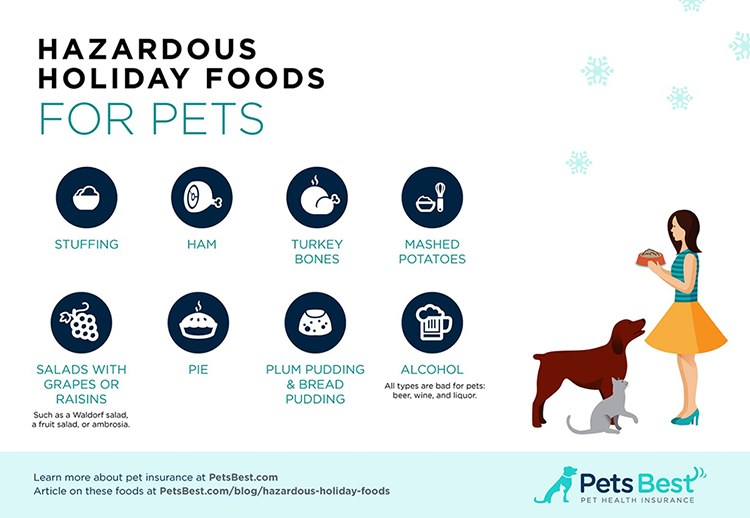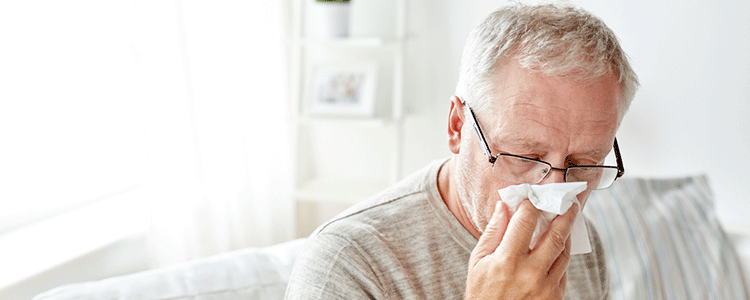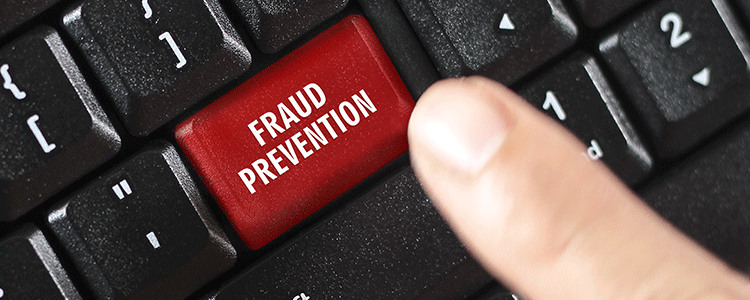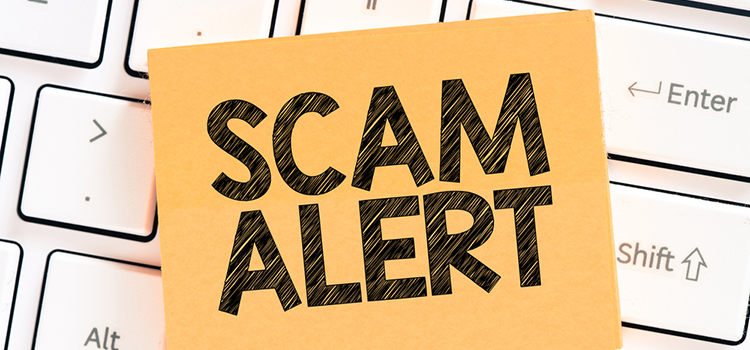Find consumer tips on everything from credit to home safety to travelling on a budget and so much more!
Four Steps to a Happy Thanksgiving That Fits Your Budget
Unfortunately, there’s a cost to this reverie, whether you’re serving as host or traveling across state lines to visit beloved relatives. With some major holiday spending on the horizon, it’s reasonable to wonder if you’re justified investing so much on Thanksgiving. If you’re concerned about the cost of your Turkey Day celebration, here are a few tips to ensure your happiness and your budget stay in alignment.
Understand Your Thanksgiving Priorities
What’s important to you when it comes to Thanksgiving? The day has different meanings for different people. Are there certain people you absolutely have to spend the day with? Is it all about the food? Do you not really care about anything other than playing touch football in the yard?
Try to step back from what you believe is “expected” from the day and canvass around to understand what you and your family actually care about. You may be surprised. If you’re spending money on things that don’t reflect your true priorities, then you may want to consider changing how you approach the holiday.
Evaluate Your Menu
Cooking an entire Thanksgiving feast can be costly, especially as many families create enormous, diverse Thanksgiving menus in the hopes of appeasing everyone. The truth of the matter, however, is that just because you’ve got one cousin who likes creamed pearl onions, doesn’t mean you have to make them.
Try not to get too wrapped up in tradition. Just because you’ve made something in the past, doesn’t mean you’re required to make it every year. It goes back to your priorities – is Thanksgiving not Thanksgiving without pickled beets? Maybe! That’s for you to decide.
Consider your food waste. Leftovers are great, but how much food goes to waste each year? It may be because you’re making too much food, or there may be certain items that simply aren’t all that popular and can be taken off the menu. Don’t be afraid to change things up from year to year, especially if your top Thanksgiving priority isn’t “Do everything the same every single year.”
Invest in a Plan
One of the best ways to reduce expenses and stress is to plan ahead. Know where you’re going, what you’re making, what you want, and how you plan on making it all happen. Planning your menu in advance allows you to scope out deals and stock up on necessary items before the last minute rush. Plotting out a plan of attack for all that cooking goes a long way towards making sure nothing is undercooked, overcooked, or just plain forgotten.
A good Thanksgiving plan also allows you to coordinate with guests and hosts alike to help share some of the burden and save a good deal of money in the process.
If You Want to Spend, Spend! Just Make Cuts Elsewhere
If Thanksgiving is your favorite holiday and you can’t bear the thought of cutting or reducing anything at all, then…don’t. It’s perfectly okay to spend however you like on Thanksgiving, especially if it’s a special time of year for you and your family. The only caveat is that if you’re spending money you don’t have set aside or budgeted out, you’ll need to make up for that elsewhere.
Ideally those adjustments should come sooner rather than later. Don’t put yourself into debt and say, “Well, I’ll worry about it next year.” If you’re allowing yourself to overspend on the holidays (and by “overspend” I mean spend money you haven’t already accounted for in your budget, putting yourself in debt) you need to have a plan in place to make up that difference. Even if that plan is nothing more complex than subtracting $20 off the top of every paycheck until you’re back to normal, you can’t break your budget without it.
The most important thing is living a healthy, happy life. Your money and your budget are just a means to that end. If happiness is a big bowl of creamed pearl onions, well, you’re an oddball, but that’s okay. Do what makes you happy. Just remember the parts that don’t make you so happy – like struggling to pay your bills, or not saving as much as you’d like – and do the necessary work to make sure the unhappy parts don’t spoil the good times.
Union Plus Credit Counseling
Union members can get a no-obligation money and credit assessment from certified, experienced consumer credit counselors though Union Plus Credit Counseling. Powered by the non-profit Money Management International (MMI), your free session will cover a complete financial review, assistance in budgeting, advice for working with creditors, and more.
Learn More

Thanksgiving is much more than just the last stop on the road to those glitzier year-end holidays. It’s an opportunity to slow down, connect with family and friends, and consume horrifying amounts of delicious foods.
Six Holiday Foods to Keep Away From Your Pets
Learn why the following six foods can be dangerous for dogs and cats.
-
Stuffing
Thanksgiving dressing is often made with onions, scallions or garlic. These ingredients, however, are extremely toxic to dogs and cats and can cause a life-threatening anemia (destruction of the red blood cells). It’s best to avoid feeding any amount of stuffing to pets.
-
Ham
Ham and other pork products can cause pancreatitis, upset stomach, vomiting and diarrhea. Pork tends to be high in fat as well, which can lead to obesity in pets. Even a small amount of ham can contribute a very large amount of calories in a small dog or cat.
-
Turkey Bones
Bones can cause severe indigestion in dogs and cats, potentially causing vomiting and obstructing the bowel. Bones may also splinter and cause damage to the inside of the stomach and intestines. In some cases, turkey bones may even puncture through the stomach and cause a potentially fatal abdominal infection.
-
Mashed Potatoes
While potatoes are safe for pets to eat, mashed potatoes usually contain butter and milk, which can cause diarrhea in lactose intolerant pets. Additionally, some recipes call for onion powder or garlic, which are very toxic to pets.
-
Salads with Grapes/Raisins
There are many salads served during the holidays that include grapes or raisins as an ingredient, from fruit salad, to waldorf salad, to ambrosia. However, grapes and raisins are very toxic and potentially deadly. Grapes can cause severe, irreversible and sometimes fatal kidney failure in dogs. Be sure to keep all dishes that include grapes and raisins away from pets.
-
Chocolate Desserts
While pumpkin pie is the most famous Thanksgiving dessert and canned pumpkin has pet health benefits, many people offer a variety of chocolate desserts at Thanksgiving and throughout the holidays. Chocolate is toxic to dogs and cats, yet dogs love the smell and taste of it. The darker the chocolate, the more toxic it is. Keep all chocolate desserts out of the reach of pets to prevent an emergency trip to the veterinarian.
If your pets ingest any of these foods this holiday season, be sure to call your veterinarian immediately. Unexpected veterinary visits can be expensive but that’s where pet insurance can help, by reimbursing on veterinary bills.
Have a happy and safe holiday season!
Learn more about the
Union Plus Pet Insurance Member Benefit,
powered by Pets Best

The holidays are almost here and that means an abundance of delicious food. However, many popular human dishes aren’t healthy for pets to consume. This is important to remember during holiday meals, when dogs and cats beg for table scraps and guests might fall for those cute faces.
Got Student Loan Debt? Don't Get Scammed
Earlier this year, the FTC announced Operation Game of Loans, a joint FTC and state law enforcement sweep against student loan debt relief scammers. The operation includes seven actions filed by the FTC.
In the FTC cases, the companies claimed to be affiliated with the government or the consumer’s loan servicer, and promised to reduce or eliminate student loan debt. They told people they were “pre-approved,” “pre-qualified” or “qualified instantly,” then pressured them to sign up for their programs on the spot. Enrolling required consumers to pay illegal advance fees of up to $1,500.
So what did these companies actually do? Usually nothing. Consumers were often left worse off, or received minimal help for services they could have gotten from their loan servicer or the U.S. Department of Education for free.
You don’t have to pay for help with your student loans. There’s nothing a company can do for you that you cannot do yourself for free. If you are a federal borrower, start with StudentAid.gov/repay. If you are a private borrower, start by talking with your loan servicer.
Here are some tips to avoid scams:
- Never pay an up-front fee. It’s illegal for companies to charge you in advance before helping you. If you pay upfront to reduce or get rid of your student loan debt, you might not get any help — or your money back.
- Only scammers promise fast loan forgiveness. Before they know your situation, scammers might say they can quickly get rid of your loans through a loan forgiveness program. But they can’t.
- A Department of Education seal doesn’t mean it’s legit. Scammers use official-looking names and logos, and say they have special access to certain federal programs. They don’t.
- Don’t share your FSA ID with anyone. Scammers could use it to get into your account and take control of your personal information.
Spotted a scam? Let us know about it.
For more resources on student loans, check out our new page: ftc.gov/StudentLoans.
Union Plus Scholarship Program
Looking for additional resources to help pay for your education? The Union Plus Scholarship Program may be able to help. Since 1991, the Union Plus Scholarship Program has awarded more than $4.2 million to students of working families who want to begin or continue their post-secondary education. Over 2,800 families have benefited from our commitment to higher education.
Learn More Here

Originally posted by the Federal Trade Commission. All rights reserved.
If you’ve got student loan debt, you’ve probably seen ads or been contacted by companies promising they can help. Some are scams – and the FTC is going after them.
Your November Financial To Do List
Even so, there are important steps you can take this month to put you in better financial stead, from learning ways to save money while shopping to making a number of end-of-year moves.
Here’s what should be on your financial to-do list:
Save on Shopping
This month, you may be able to save money when shopping online by understanding how retailers adjust their prices. More retailers now use dynamic pricing strategies—they shift their prices as they monitor competitors’ pricing and customer demand. Some even use what they know about your shopping habits and location to set the prices they show you.
There are steps you can take that may help you pay less, such as letting items sit in your shopping cart until the retailer drops the price to get you to buy. Another idea: Input a friend’s or relative’s ZIP code, or enlist someone in another ZIP code to shop for you. Prices may be lower than in your area.
There are also a number of digital tools you can use to save money while shopping. They range from browser extensions such as Invisible Hand to gift cards that sell for less than face value at sites like Raise or CardCash.
Take Your Required Minimum Distributions
If you have money in a tax-deferred retirement account such as a traditional 401(k) or IRA, and you’re over age 70 ½, taking a required minimum distribution before the end of the year should be on your financial to-do list.
The amount that you must withdraw is based on the amount of money you have in such accounts and your life expectancy, according to the IRS. Note that you will also have to pay taxes on this income when you file in April.
Failing to take your required minimum distribution can be costly: You’ll owe the IRS a penalty that comes to half of the amount that should have been withdrawn. It’s a smart idea to get in touch with your financial adviser now to figure out how much money you need to withdraw.
If your money is in a Roth IRA, you won’t need to add this to your financial to-do list. Roth IRAs are not subject to minimum distributions. You are also not required to take a distribution from a 401(k) with an employer for which you currently work.
Plan Your Charitable Contributions
Giving money to important causes is in keeping with the spirit of the holidays, and doing so before year-end can give you an extra write-off at tax time. Before sending in money, run a check of the organization you plan to contribute to via sites like Charity Navigator and GuideStar. These watchdogs, as they are known, offer reviews from donors as well as data on how much of the contributions you make go directly to the cause. (For local or regional charities, check the BBB Wise Giving Alliance.) When you do give, be sure to save the receipt so that you have it at tax time.
Visit Your Doctor
If you still have money in a medical flexible-spending account at work, put this on your financial to-do list: Start spending it down. Although many companies now offer a grace period into next year, you’ll forfeit any money you haven’t spent once that period expires. Take the opportunity to make doctor’s appointments that you’ve been putting off, or to schedule a flu shot if you haven’t had one yet. November is the slowest month of the year for doctors, according to Zocdoc, a website that helps you to find a doctor and make medical appointments online. So you should be able to get a convenient appointment with a reasonable wait time.
Note: If your money is in a health spending account (an HSA rather than an FSA), the unused balance will roll over to next year.
Buy Items on Deep Discount
In addition to the savings you’ll get on Black Friday and Cyber Monday, November is a great time to get a discount on televisions and toys.
Research by Consumer Reports product experts, who track prices year-round, shows that November is an ideal time to get a good deal on coffee makers and refrigerators. The cooler weather means you may also be able to get a good deal on leftover bikes and gas grills, which retailers need to move out of their stores.
Copyright© 2006-2017 Consumer Reports, Inc. of U.S., Inc. No reproduction, in whole or part, without written permission.


In just a few weeks, the holiday shopping season will officially start with sales during Black Friday—the day after Thanksgiving—and Cyber Monday. It’s also the time of year when you’re likely to be more focused on traveling and social get-togethers.
How Not to Get a Cold or Flu this Season
“Many different germs can survive on surfaces,” says Tom Talbot, M.D., chief hospital epidemiologist at Vanderbilt University Medical Center in Nashville, Tenn.
Touching a spot that has been contaminated by germs — at home, at work, or just about anywhere else — puts you at risk of infection if you later touch your mouth, nose, or eyes, all areas that allow microbes to enter your body.
Washing your hands — the right way and at the right time — eliminates the germs before they can gain access and make you sick. Here, advice from the experts:
When to Wash
Always wash your hands after you use the bathroom, before you eat food, and anytime your hands are visibly dirty, says Janet Haas, Ph.D., R.N., director of epidemiology at Lenox Hill Hospital in New York and president-elect of the Association for Professionals in Infection Control and Epidemiology. It’s easy to pick up or transmit germs in all three of these instances.
“People should also consider cleaning their hands after they’ve been on public transportation,” she adds.
Make sure kids wash their hands when they come into the house after playing outside. And the Centers for Disease Control and Prevention also recommends that you wash your hands after touching animals.
And if you’re sick with a respiratory infection, such as the common cold or the flu, you may want to clean your hands more often than usual, Haas says, because if you’re coughing and sneezing, you could be contaminating your hands and spreading the bug to others.
How to Encourage Your Doctor to Wash
While hand hygiene is always important, it’s essential if you’re in the hospital, where severe and sometimes antibiotic-resistant infections can lurk.
“Hospital personnel not only can transmit infections but also can get sick themselves,” says Orly Avitzur, M.D., Consumer Reports’ medical director. “So we all know that we should wash our hands before and after attending to every patient.”
But research shows that doesn’t always happen. According to the CDC and assorted studies, some providers clean their hands as little as half as often as they should.
If you are hospitalized or caring for someone who is, and notice that a healthcare provider hasn’t washed up when entering your room, speak up.
To make this conversation feel less daunting, Avitzur recommends taking note of any signs posted about hand-washing in the hospital and using that as a way to start the conversation.
Avitzur suggests saying—or asking a family member to say—something like, “I was so pleased to see that your hospital has a hand-washing policy. Have you washed your hands?”
In addition, remind visitors to wash their hands when they enter and leave your room. And if you’re the patient, be sure to keep up with your hand hygiene. Ask for help washing your hands before a meal, or request a bottle of alcohol-based hand sanitizer.
The Best Way to Wash
Generally, washing with soap and water is the most effective method for reducing the number of germs on your hands.
Plain soap is best—skip antibacterial products because there’s no evidence they work any better than regular soap, and they may encourage the breeding of bacteria that can’t be cured by antibiotics.
If you have no access to soap and water, using a hand sanitizer made with at least 60 percent alcohol is the next best option. But hand sanitizers won’t eliminate all kinds of germs, according to the CDC.
For example, they’re ineffective against Clostridium difficile (C. diff), a hard-to-cure diarrheal infection that’s common in hospitals. So if you have this infection, you (and your care team and visitors) will need to wash with soap and water.
Copyright© 2006-2017 Consumers Union of U.S., Inc. No reproduction, in whole or part, without written permission.


You can do plenty to help prevent the spread of viral and bacterial infections, such as getting a flu shot and staying home from work or school if you get sick.
But one of the most important steps is also one of the simplest: washing your hands regularly.
10 Things You Can Do to Avoid Fraud
- Spot imposters. Scammers often pretend to be someone you trust, like a government official, a family member, a charity, or a company you do business with. Don’t send money or give out personal information in response to an unexpected request — whether it comes as a text, a phone call, or an email.
- Do online searches. Type a company or product name into your favorite search engine with words like “review,” “complaint” or “scam.” Or search for a phrase that describes your situation, like “IRS call.” You can even search for phone numbers to see if other people have reported them as scams.
- Don’t believe your caller ID. Technology makes it easy for scammers to fake caller ID information, so the name and number you see aren’t always real. If someone calls asking for money or personal information, hang up. If you think the caller might be telling the truth, call back to a number you know is genuine.
- Don’t pay upfront for a promise. Someone might ask you to pay in advance for things like debt relief, credit and loan offers, mortgage assistance, or a job. They might even say you’ve won a prize, but first you have to pay taxes or fees. If you do, they will probably take the money and disappear.
- Consider how you pay. Credit cards have significant fraud protection built in, but some payment methods don’t. Wiring money through services like Western Union or MoneyGram is risky because it’s nearly impossible to get your money back. That’s also true for reloadable cards like MoneyPak, Reloadit or Vanilla. Government offices and honest companies won’t require you to use these payment methods.
- Talk to someone. Before you give up your money or personal information, talk to someone you trust. Con artists want you to make decisions in a hurry. They might even threaten you. Slow down, check out the story, do an online search, consult an expert — or just tell a friend.
- Hang up on robocalls. If you answer the phone and hear a recorded sales pitch, hang up and report it to the FTC. These calls are illegal, and often the products are bogus. Don’t press 1 to speak to a person or to be taken off the list. That could lead to more calls.
- Be skeptical about free trial offers. Some companies use free trials to sign you up for products and bill you every month until you cancel. Before you agree to a free trial, research the company and read the cancellation policy. And always review your monthly statements for charges you don’t recognize.
- Don’t deposit a check and wire money back. By law, banks must make funds from deposited checks available within days, but uncovering a fake check can take weeks. If a check you deposit turns out to be a fake, you’re responsible for repaying the bank.
- Sign up for free scam alerts from the FTC at ftc.gov/scams. Get the latest tips and advice about scams sent right to your inbox.
If you spot a scam, report it at ftc.gov/complaint. Your reports help the FTC and other law enforcement investigate scams and bring crooks to justice.

Originally posted by the Federal Trade Commission. All rights reserved.
Crooks use clever schemes to defraud millions of people every year. They often combine new technology with old tricks to get people to send money or give out personal information. Here are some practical tips to help you stay a step ahead.
Chocolate Safety for Dogs and Cats
Signs and Symptoms That Your Pet Ingested Chocolate
If a pet has ingested chocolate, the most common symptoms are vomiting, diarrhea, hyperactivity (such as excitation, restlessness, or panting), tremors and convulsions, seizures, racing heart rate, and arrhythmia.
Why and How is Chocolate Toxic
Chocolate contains a chemical called theobromine, this chemical is the reason that chocolate is toxic to both dogs and cats. The more theobromine found in a product, the more toxic it is to a pet.
Chocolate Types: From Most Toxic to Least Toxic
Baking chocolate is the most toxic, followed by semisweet/dark chocolate, then milk chocolate, and lastly white chocolate (which contains an insignificant amount of theobromine).
How Much Chocolate Will Poison My Dog or Cat?
Toxic doses of theobromine are 9 milligrams per pound. Meaning that a 20-pound animal would need to eat 8.2 ounces of milk chocolate, or just 0.9 ounces of baking chocolate to achieve a toxic dose.
Reduce the Risk
To help reduce the chance of your pet eating chocolate, be sure to keep chocolate-products in out of reach areas for pets. Cats are more finicky about what they eat and probably won’t eat chocolate that is left out but dogs actually like the smell and taste of chocolate, so you need to be much more careful with them.
What to do if Your Dog or Cat Eats Chocolate
If you suspect or know that your pet has eaten chocolate, it is important to seek veterinary care as soon as possible.


While it’s fairly common knowledge that chocolate is bad for dogs, many people don’t realize that chocolate is also bad for cats.
Learn why chocolate is bad for both dogs and cats, which chocolate is the most dangerous, and signs and symptoms that your pet has ingested chocolate.
Budgeting for Your First Home
Start pre-shopping early
Buying a house is no small feat. The more you can do to prepare, the better. One step to consider is pre-shopping a few years ahead of your target date. This means looking at listings and features for homes in your target location.
This is a great way to get a handle on the cost of homes in your area, while figuring out your home-buying priorities. How important is location? Size? Accessibility? As you begin to weigh these features against potential costs, you’ll get a much better sense of what you need versus what you want. You’ll also really begin to see how much you’ll need to start saving.
Set a spending cap and start saving for your down payment
You may not have to put a significant down payment on your new home, but the more cash you can bring to closing, the better off you’ll be. You’ll have more flexibility when it comes to mortgage terms, and if you have at least 20 percent of the home’s value available as a down payment, you can avoid costly PMI (Private Mortgage Insurance) payments.
By understanding your spending threshold, you can decide how much you’ll need for a down payment, which will then allow you to start planning out your budget.
Figure out the monthly cost of homeownership
We all know that housing costs don’t end with the mortgage payment. There are a ton of other costs and considerations unique to homeownership. You need to have a sense of these costs and where they fit into your future budget, because the last thing you want is to buy your dream home only to discover that you can’t actually afford it.
Property taxes – This is one of your most significant costs and it can catch you off guard if you aren’t prepared for it. Property taxes vary wildly depending on where you live, so you’ll want to do your research. This calculator from Smart Asset can give you a rough estimate of your yearly tax bill based on ZIP code and home value.
Homeowners’ insurance – Your homeowners’ insurance premium will depend on a range of factors from the age of your home to the type of materials used to build the home. It’s difficult to get an accurate estimate without speaking directly with an insurer, but this list of average premium prices across all 50 states is a good starting point. Just keep in mind that if your home is in a flood-prone area, you’ll likely have to purchase additional flood insurance.
Energy and heating bills – It’s probably no surprise to learn that a house usually costs more to heat and power than an apartment. How much it will cost is tricky to pin down ahead of time, since it depends so much on your plan details and usage rates. Your best bet may be to check with utility companies in your target area to see if they have cost calculators available, like this one from Reliant. If you’re the outgoing type, you could also just ask someone in the neighborhood how much they spend on heating and energy.
Home repair – A popular rule of thumb is to set aside one percent of the value or purchase price of your home each year for potential repair costs. Obviously, the likelihood of your home needing repairs changes greatly depending on age and location, so if you’re buying an old home or a fixer-upper, you’ll want to prepare for a bigger spend.
What don’t you have?
Lastly, you’ll want to consider what you don’t already have. Will you need to purchase furniture? A washer and dryer? A refrigerator? These are all things you’ll probably want to have as soon as you move in, so be sure to set aside funds for any necessary appliances or furnishings.
Train yourself to live on your house budget
Once you understand the upfront and ongoing costs of homeownership, you’ll be able to plot out a budgeting course that 1) saves you the necessary amount of money, and 2) prepares you for the monthly costs of owning a home. Luckily, the two objectives can go hand-in-hand. As you work towards buying a home, take the money you’ll eventually be spending on property taxes, homeowners’ insurance, and the rest, and put that money into savings – which you’ll then use to help purchase your home. Now you’ll have the money you need to buy your first home, plus the proven ability to comfortably manage and stay in that home!

Is it time to start thinking about purchasing your first home? Apartment dwelling is fine and living with the folks is a great way to save money, but for quite a few of us, owning a home is the light at the end of the living situation tunnel. While it may seem like the only thing you need to make that dream a reality is money (a great, big pile of it), there’s a bit more to it. Here are a few tips to prepare yourself financially and mentally, well in advance of the closing date.
Seven Keys to Avoiding Post-Disaster Scams
Unfortunately, the turmoil that rises up in the wake of a major disaster is also a prime breeding ground for scams and scam artists. These crooks take advantage of the anguish and confusion surrounding a major misfortune and use it to twist our fears and sympathy to their advantage. Fortunately, there are a few key ways you can protect yourself from the sort of scams that tend to pop up during and after a disaster.
Remember that anyone can call you or send you mail
A large portion of the most successful scams start simply with a phone call or a piece of mail. The people calling sound authoritative and the mail looks authentic, so you go along with what you’re being told. That’s why it bears remembering that anyone can call you and anyone can cobble together an official-looking piece of mail. Avoid assuming that just because someone seems credible, that they are.
Independently verify everything
If someone calls and tells you that you need to make a payment immediately in order to maintain your flood coverage (a popular scam that cropped up again in the aftermath of Hurricane Harvey’s record rainfall), hang up the phone and check with your insurer directly. Don’t use any phone number provided via robocall or unsolicited mail. Use the phone number provided on your monthly bill or find one directly on your insurer’s website.
Scammers will always try to keep you inside their loop by providing you with phone numbers, mailing addresses, email addresses, and website links that they control. If you’re ever suspicious, be sure to independently verify what you’re being told.
Legitimate services will almost never pressure you to take any action immediately
Many scams work because they prey on our fears – that if we don’t do what we’re told to do, something terrible might happen. That fear is only increased during a disaster, when terrible things are already happening and we’re just trying to minimize the damage.
If someone is telling you that you need to act now, chances are good they’re trying to prevent you from verifying whether or not they’re a legitimate business or service. Don’t let the pressure get to you.
Never make payments or give out personal information on a phone call you didn’t initiate
There may be a legitimate charity or business calling you directly and asking you to make a payment, but the odds are against it. Your safest bet is always to avoid making payments or providing crucial personal information over the phone or through email. If you do need to do either, at least make sure you’re the one who started the call. You’re highly advised to never include confidential information in an email – if you need to submit that kind of information online, make sure you’re using a secure site (the web address should begin with https).
Be wary of anyone going door-to-door
Scammers have been known to pose as contractors, charity workers, or even government officials, and unfortunately fake uniforms and ID cards can be pretty convincing. Just keep in mind that if anyone is trying to sell you something or looking for a donation, you can say no and then do the necessary research. You should be especially wary of anyone asking for full payment upfront on any service. Also, no government employee should be asking you for payment or confidential financial information before providing a benefit or service.
Stick with charities and services you know and trust
One of the best ways to protect yourself is to simply stick with the charities and businesses you’re already familiar with. That isn’t to say you can’t give to new charities or use new businesses, but the best research is usually firsthand. At the very least, lean on services with an established track record. If you can’t verify that the charity or business in question in credible, chances are good you can easily find an alternative that is.
Document everything
Even when dealing with legitimate businesses and charities, things can go awry. When hiring someone to perform any sort of service, make sure that
- They’re qualified and you’ve seen any licenses or certifications required by their field;
- They provide you with an estimate upfront, followed by a written agreement detailing what work will be done by when and at what price;
- You confirm with your insurer that any work that’s supposedly covered by your insurance actually is; and
- You pay with a credit card whenever possible. Paying with a credit card gives you the ability to reverse any fraudulent charges, adding an extra layer of protection.
Good recordkeeping doesn’t guarantee that you’ll avoid any and all potential scams, but it will make things much easier to untangle in the event someone tries to take advantage of you.
Good luck and stay safe!
Union Plus Credit Counseling
Union members can get a no-obligation money and credit assessment from certified, experienced consumer credit counselors though Union Plus Credit Counseling. Powered by the non-profit Money Management International (MMI), your free session will cover a complete financial review, assistance in budgeting, advice for working with creditors, and more.

As we’ve seen time and time again, disasters have a tendency to bring out the best in us. From neighbors helping neighbors, to foreign countries sending aid, catastrophe has a way of bringing people together.
Is Your Home Underinsured?
Improvements Can Boost Home Value
Home improvement projects do more than increase your comfort and pleasure—they can spike the cost to rebuild your home.
How to fix it: Once a year, do a policy review with your MetLife Auto & Home insurance representative. He or she can calculate how much it would cost to rebuild your house, then make sure your insurance policy covers you for 100 percent of that estimated amount.
Higher Construction Costs Aren’t Factored In
Even if your home was properly insured when you purchased it from a builder, today’s higher costs of construction and changes in building codes could cause problems should you need to rebuild.
How to fix it: Ask for a total component rebuilding estimate that evaluates each aspect of your home’s construction. This includes examining the quality of materials — flooring, cabinets, vanities and countertops — rather than merely applying known rates of inflation to your former insurance limits.
Older Homes Have Unique Characteristics
Older homes, especially if they are historic, present unique insurance challenges.
Potential problems: Older homes often feature better craftsmanship and higher-quality materials than those used in contemporary homes. Details, such as high-grade wood floors or an elaborately detailed Victorian exterior, can be much more expensive to replace than modern vinyl tile and siding.

L0717496846[exp0620][All States][DC]

Two out of three U.S. homes don’t have enough coverage in case of disaster. Find out if yours is one of them.